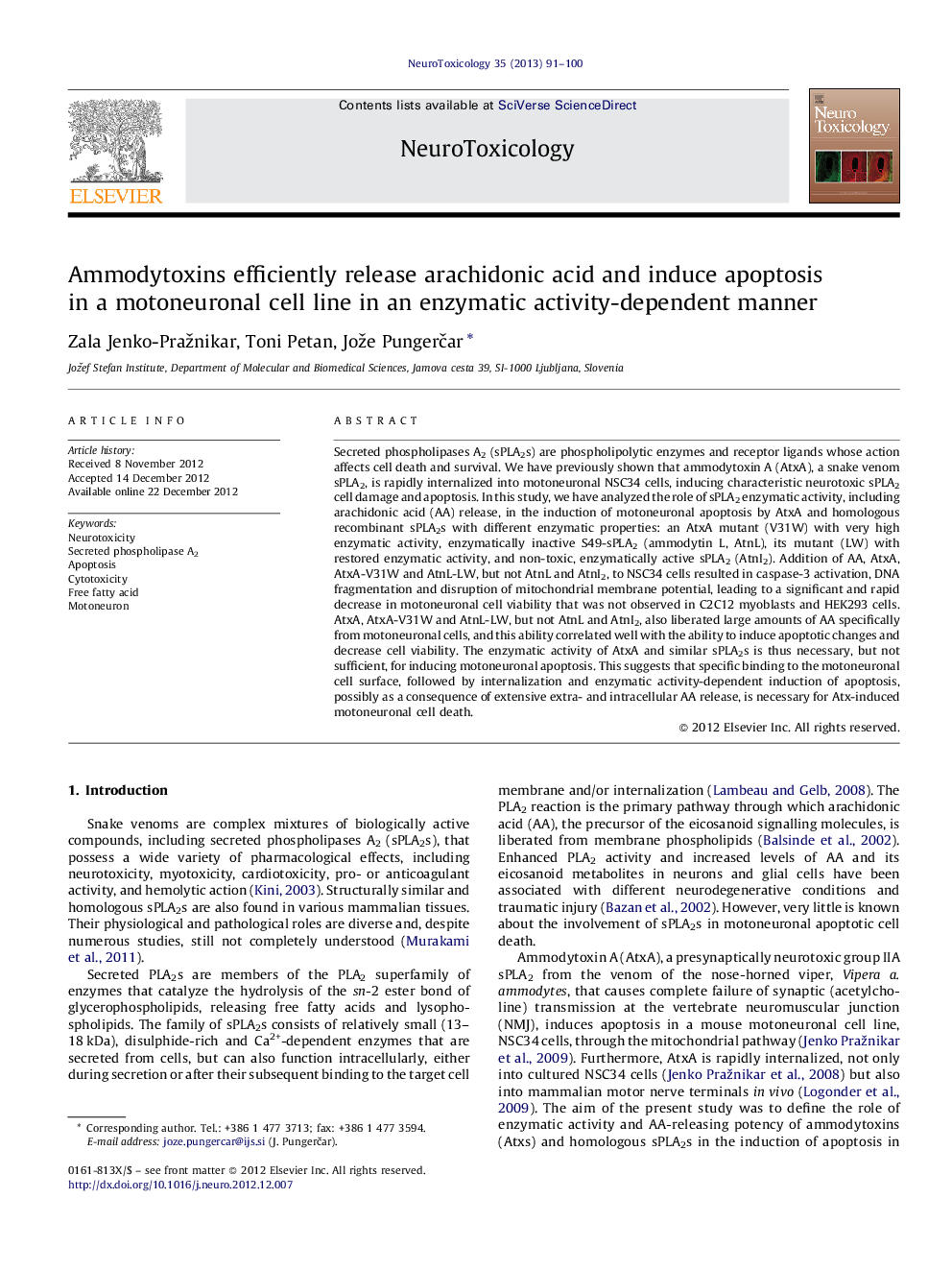| Article ID | Journal | Published Year | Pages | File Type |
|---|---|---|---|---|
| 2589810 | NeuroToxicology | 2013 | 10 Pages |
Secreted phospholipases A2 (sPLA2s) are phospholipolytic enzymes and receptor ligands whose action affects cell death and survival. We have previously shown that ammodytoxin A (AtxA), a snake venom sPLA2, is rapidly internalized into motoneuronal NSC34 cells, inducing characteristic neurotoxic sPLA2 cell damage and apoptosis. In this study, we have analyzed the role of sPLA2 enzymatic activity, including arachidonic acid (AA) release, in the induction of motoneuronal apoptosis by AtxA and homologous recombinant sPLA2s with different enzymatic properties: an AtxA mutant (V31W) with very high enzymatic activity, enzymatically inactive S49-sPLA2 (ammodytin L, AtnL), its mutant (LW) with restored enzymatic activity, and non-toxic, enzymatically active sPLA2 (AtnI2). Addition of AA, AtxA, AtxA-V31W and AtnL-LW, but not AtnL and AtnI2, to NSC34 cells resulted in caspase-3 activation, DNA fragmentation and disruption of mitochondrial membrane potential, leading to a significant and rapid decrease in motoneuronal cell viability that was not observed in C2C12 myoblasts and HEK293 cells. AtxA, AtxA-V31W and AtnL-LW, but not AtnL and AtnI2, also liberated large amounts of AA specifically from motoneuronal cells, and this ability correlated well with the ability to induce apoptotic changes and decrease cell viability. The enzymatic activity of AtxA and similar sPLA2s is thus necessary, but not sufficient, for inducing motoneuronal apoptosis. This suggests that specific binding to the motoneuronal cell surface, followed by internalization and enzymatic activity-dependent induction of apoptosis, possibly as a consequence of extensive extra- and intracellular AA release, is necessary for Atx-induced motoneuronal cell death.
